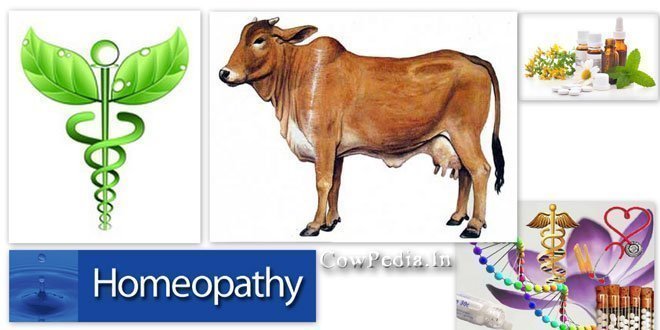Repeat Breeding – Homeopathic Treatment
Homeopathic treatment of repeat breeding in bovines in north Gujarat
S. Chandel, A. I. Dadawala, H. C. Chauhan, Pankajkumar and H. R. Parsani
College of Veterinary Science and Animal Husbandry SDAU
Sardarkrushinagar-385506
Corresponding author email: drabidvet2007@gmail.com
Introduction
A repeat breeding animal is one which has normal reproductive tract with normal oestrus cycle but which does not settle even to reported services by a fertile bull or inseminate by good quality semen. These can neither be considered as sterile nor can anyone say as to when they will settle to service. The factors responsible for repeat breeding have been reviewed by Roberts (1971) and Pendre (1974). The Fertisule a Homoeopathic complex has been shown to restore normal reproduction rhythm by stimulating Gonadotropin secretions in Fertisule treated animals.
Materials and Methods
A total of 100 cross breed cattle and 85 Mehsani buffaloes were used for the study out of which 10 each (10 cross breed cows and 10 buffaloes) were kept as control without asserting any treatment. In all the treated animals 90 cows and 75 buffaloes were treated with a combination of Homoeopathic medicines and properly monitored for their breeding. The Fertisule tablets were fed continuously for 21 days even if the animal comes in to oestrus in between and bred, Simultaneously the control animals were also monitored as treated animals.
The composition of Fertisule (a combination of Homoeopathic drugs) contains saturated tablets with
- Alteris Farinosa 30
- Aurum Met.30
- Apis Mel. 30
- Borex 30
- Calc. Phos. 30
- Colocynthis 30
- Folliculinum 30
- Iodine 30
- Murex 30
- Oophorinum 30
- Palladium 30
- Platinum 30
- Pulsatilla 30
- Sepia 200
Results and Discussion
Out of 90 cross breed cows, 50 animals came in to oestrus within 16 days and bred and Bred and all were found pregnant when examined per rectally after 2 months of services. Among other 40 animals 30 animals bred within a week after completion of medicine and were found pregnant when examined. Only in 8 animals the same medicine was repeated and they came in to oestrus within 15 days, and bred and settled, among control group to 10 cross bed cows none become pregnant.
Out of 65 buffaloes the Fertisule was introduced in the same schedule as in cattle. All the buffaloes responded and become pregnant in a single treatment schedule but none found pregnant among 10 buffaloes of control group.
Conclusion
Thus it can be concluded that Fertisule ( a combination of homoeopathic drugs) has better response in buffaloes as compared to cattle which might be due to better penetration capacity of this homoeopathic drug in buffaloes. The overall response of fertisule is very good in repeat breeding cattle and buffaloes which have no apparent sign of reproductive abnormalities. The single most important factor satisfactory response is triggering of endocrine secretion which might be responsible for normal reproductive rhythm. Sane et al (1982) also emphasized that optimum balance of various hormones is absolutely necessary for the maintenance of normal pregnancy.
Acknowledgement
The Authors are thankful to Goel Vet Pharma, Chittorgarh, Rajasthan for providing medicines free of cost. Thank are also due to Farmers and field Veterinarians of North Gujarat region for their cooperation in this study, without their support such study would have not been possible.
References
- Pandre M D (1994): studies on the aetiology of repeat breeders syndrome in dairy cows Ph D thesis, Budapest.
- Roberts S J C (1971): Veterinary Obstetrics and genital disease, CBS publication and Distributors, India.
- Sane C R, Luktuke S N, Despande B R I Kakani A S, Vel hanker D P, Hukari V B, and Kodogali S B, (1983):
A Textbook of Reproduction in Farm Animals (Theriogenology) Verghese Publication House, Bombay.
- Asso. Professor, Microbiology. 2. SRF in AINP-BT and Ph.D Scholer in Microbiology 3. Asstt. Professor, Microbiology. 4. Asstt. Professor, Microbiology. 5. Asstt. Professor, Parasitology
(Source: Veterinary World Vol.2, No.6, June 2009)


Leave a Reply
Want to join the discussion?Feel free to contribute!